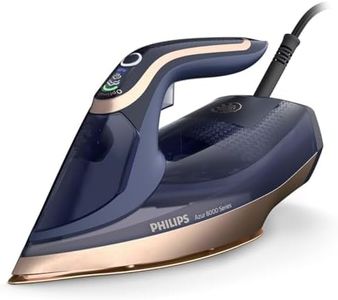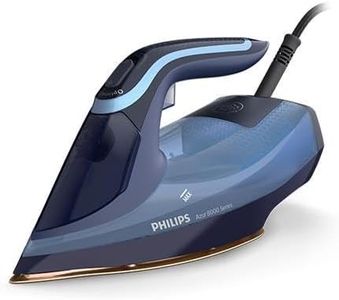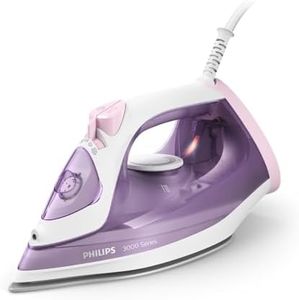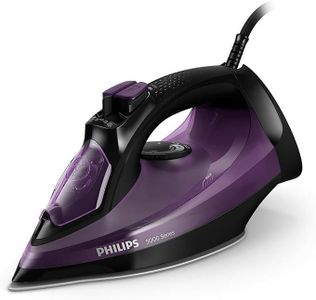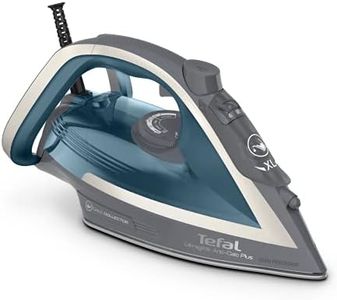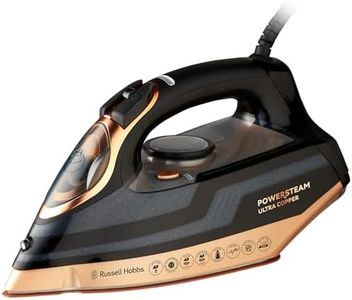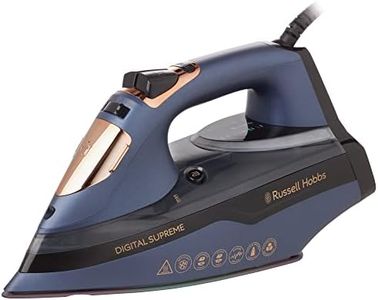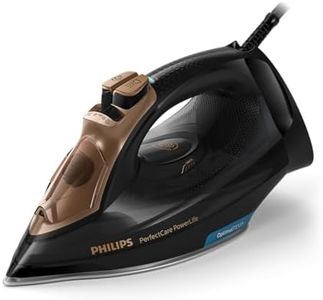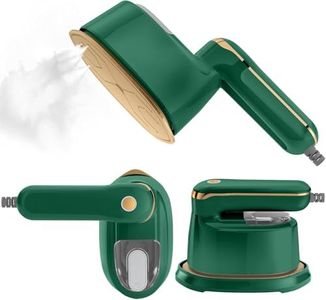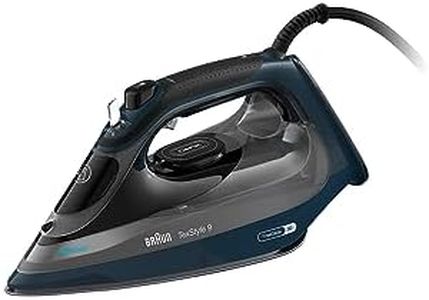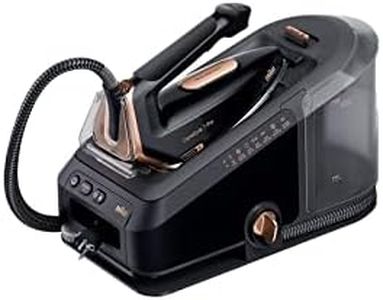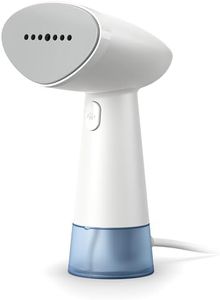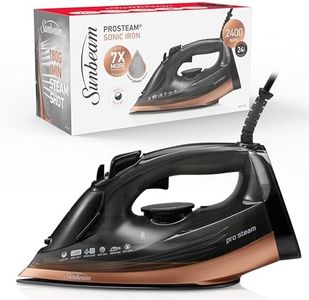We Use CookiesWe use cookies to enhance the security, performance,
functionality and for analytical and promotional activities. By continuing to browse this site you
are agreeing to our privacy policy
10 Best Lightweight Steam Irons
From leading brands and best sellers available on the web.Buying Guide for the Best Lightweight Steam Irons
Choosing a lightweight steam iron can make ironing clothes much easier and less tiring, especially for longer sessions or if you have many items to press. Lightweight models reduce strain on your wrist and arm, while still offering the benefits of steam to smooth out wrinkles quickly and efficiently. To make the best choice, it's important to look at a set of key features rather than focusing on just one, as each plays a role in overall ease of use, performance, and convenience.WeightThe weight of a steam iron refers to how heavy or light the appliance is when empty and when filled with water. Lightweight irons generally weigh less than 3 pounds. This feature is particularly important if you have a lot of ironing to do at once, if you have limited strength, or if you anticipate needing to travel with your iron. Slightly heavier irons may press stubborn wrinkles a bit more easily, but if portability or comfort is most important, sticking to lighter weights is better.
Steam OutputSteam output determines how much steam the iron produces, usually measured in grams per minute. More steam helps relax fibers faster and makes tough wrinkles easier to remove. Low steam irons are suitable for thin, delicate fabrics and simple touch-ups. Irons with mid-level steam output balance versatility and efficiency for everyday use, while high-steam models handle heavy fabrics and tough jobs best. Your choice should match the kind of fabrics you mostly iron: everyday shirts and linens require standard steam, while thicker items like jeans or curtains may need stronger output.
Soleplate MaterialThe soleplate is the flat bottom part of the iron that heats up and makes contact with the fabric. Common materials are stainless steel, ceramic, and nonstick coated. Stainless steel glides well and is durable, ceramic plates distribute heat evenly and resist sticking, and nonstick coatings prevent even delicate fabrics from burning. If you iron a wide variety of materials, an even-gliding soleplate with a nonstick or ceramic finish can make the process smoother and safer for clothes.
Water Tank CapacityThe water tank holds the water used for creating steam. Smaller capacities mean you’ll need to refill more often, but they also contribute to a lighter total weight. Larger tanks are useful for bigger ironing sessions, but can make the iron heavier. For occasional, small loads, a smaller tank is sufficient. If you regularly iron many clothes at once, look for a balance where the tank holds enough water for less refilling, but not so much that it becomes difficult to lift.
Ease of Use FeaturesEase of use includes things like a comfortable handle, intuitive controls, a long cord (or cordless option), and an easy-to-fill water tank. Features like anti-drip systems, auto shut-off for safety, and clear water level windows all improve the user experience. If you want quick, hassle-free ironing, prioritize irons that feel natural in your hand, have buttons you can easily reach, and offer thoughtful safety features.
